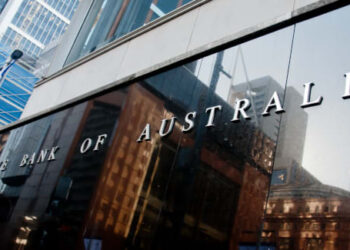Through its spending restraint, the government has significantly narrowed the deficit forecast for this financial year from $13.9 billion projected in May to $1.1 billion.
According to Treasurer Jim Chalmers’ mid-year economic update, this “much smaller deficit” is an improvement of $12.8 billion compared to the May budget, and a $55.4 billion turnaround compared to what was left by Labor’s predecessors.
Budget management is largely being applauded as the driver of this narrower deficit, with Mr Chalmers noting that: “Through our spending restraint, and by banking upward revisions to revenue, our economic and fiscal strategy is working alongside monetary policy to ease inflationary pressures in our economy.”
He, however, held back from declaring a second surplus.
“We are not yet forecasting a second surplus, but we are within striking distance. We have given ourselves a chance, but we aren’t there yet,” the Treasurer said.
Last financial year, the government celebrated the first budget surplus in 15 years of $22.1 billion, equivalent to 0.9 per cent of Australia’s GDP.
Looking at the figures presented this year in depth revealed that the key drivers of the improvement are $64 billion in estimated higher receipts over the four years to 2026–27 due to higher company tax payments.
Gross debt as a share of GDP is now expected to peak 1.1 percentage points lower than forecast in the May budget at 35.4 per cent of GDP in 2027–28, before declining to 32.1 per cent of GDP by 2033–34.
According to Wednesday’s mid-year economic and fiscal outlook (MYEFO), the government also continued to focus on reprioritisations and savings.
Some $9.8 billion in savings and reprioritisations were identified in the MYEFO. Including the past two budgets, this brings the total savings and spending reprioritisations to $49.6 billion.
The Treasurer said this translates into a 92 per cent upward revisions to revenue since the last budget, and 88 per cent of revenue upgrades since Labor came to office.
“Returning these upgrades in MYEFO means that interest payments are $31 billion lower over the 12 years to 2033–34 compared to if they had been spent,” the MYEFO reads.
“Including all the upgrades returned since [the pre-election economic and fiscal outlook], $145 billion in interest payments will be avoided over the same period and gross debt as a share of GDP is projected to be 10.5 percentage points lower in 2033–34.”
Uncertain outlook
The MYEFO noted that the outlook for the global economy remains highly uncertain, with inflation recognised as a key challenge in many economies.
“Russia’s invasion of Ukraine, the Hamas-Israel conflict, China’s property sector downturn and the lagged effects of sharp monetary tightening all pose downside risks to the outlook for global growth,” it said.
“Global growth is expected to slow from 3.4 per cent in 2022 to 3 per cent in 2023 and 2024 as persistent inflation and higher interest rates weigh on economic activity. A modest pick-up to 3.25 per cent is expected in 2025.”
In Australia, the impacts of higher interest rates and elevated but moderating inflation on households are expected to weigh on economic activity in the near term.
GDP is forecast to slow from 3.1 per cent in 2022–23 to 1.75 per cent in 2023–24, a “modest upgrade” on the 1.5 per cent growth forecast in the May budget.
Growth is then expected to pick up to 2.25 per cent in 2024–25, 2.5 per cent in 2025–26, and 2.75 per cent in 2026–27, with these forecasts remaining unchanged since the budget.
Meanwhile, the consumer price index (CPI) is tipped to slow from 6 per cent in 2022–23 to 3.75 per cent in 2023–24, half a percentage point higher than forecast in May.
“The forecasts you see in the mid-year update are consistent with what I’ve been saying for the last couple of weeks, which is that the volatility in oil prices in recent months meant a small uptick in the forecast in the near term, but no change to Treasury’s expectations for when inflation will return to the target band in 2025,” Dr Chalmers said.
“The governor of the Reserve Bank has explained in some detail their own expectations for inflation. They are not substantially different, but I’ll leave you in her hands to describe the way that recent developments impact on their expectations for inflation.”
According to the MYEFO forecasts, inflation will ease to 2.75 per cent in the 2024–25 financial year, below the RBA’s 2–3 per cent target band. Meanwhile, the Reserve Bank does not expect inflation will fall below target until the end of the 2025 calendar year.
“We want to make sure we keep inflation under control and we bring it back down to our band, but we also need to make sure we do that in the context of not imposing on the economy too much, and raising the unemployment rate so much,” she said late last month.








At 2 bucks a litre for juice Im surprised they’re not swimming in it!
Let us not forget that we would have had a $7.2 billion surplus in FY 18/19 if the current methodology of including the Future Fund’s net earnings in budget revenues was in place then.